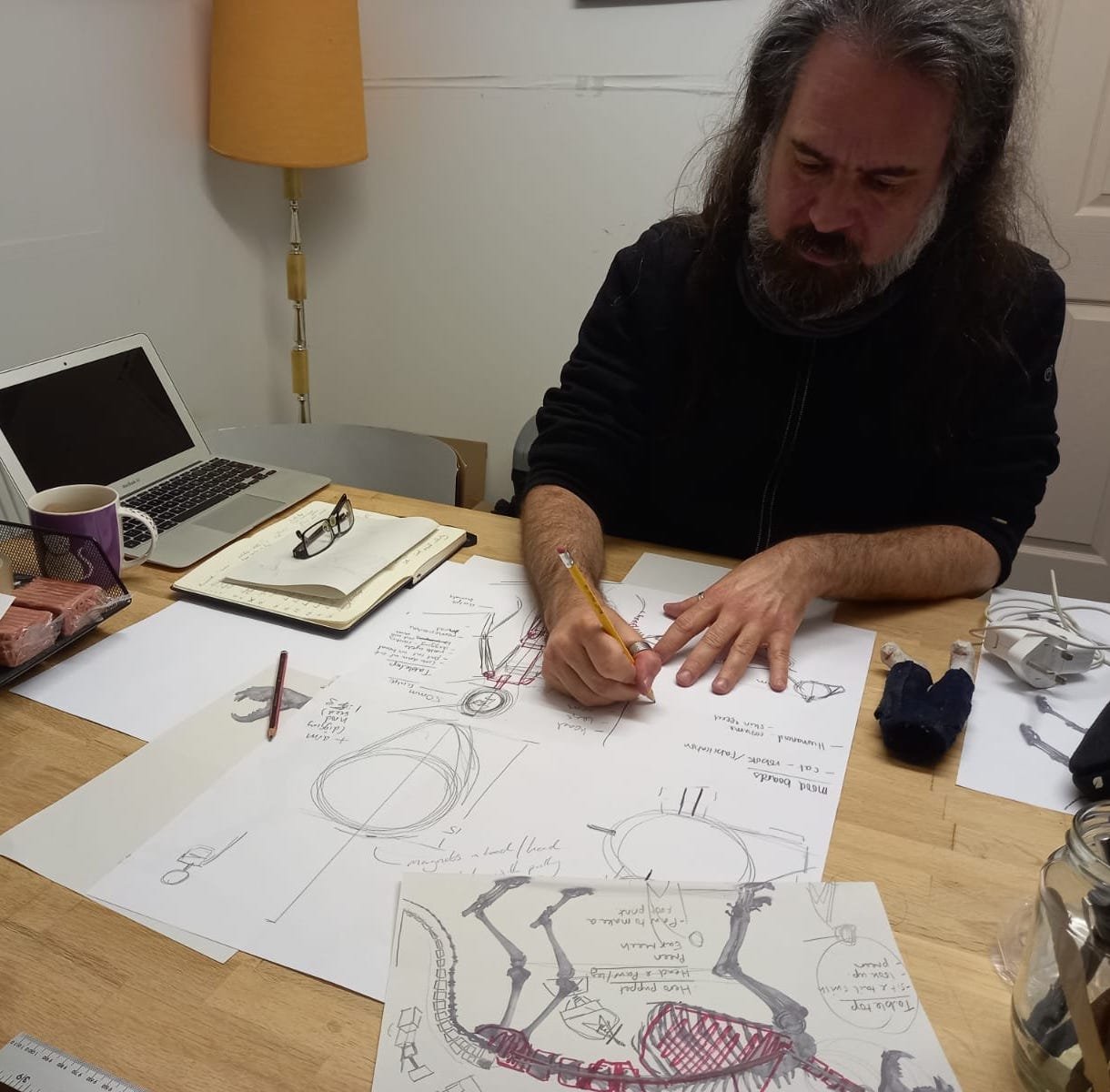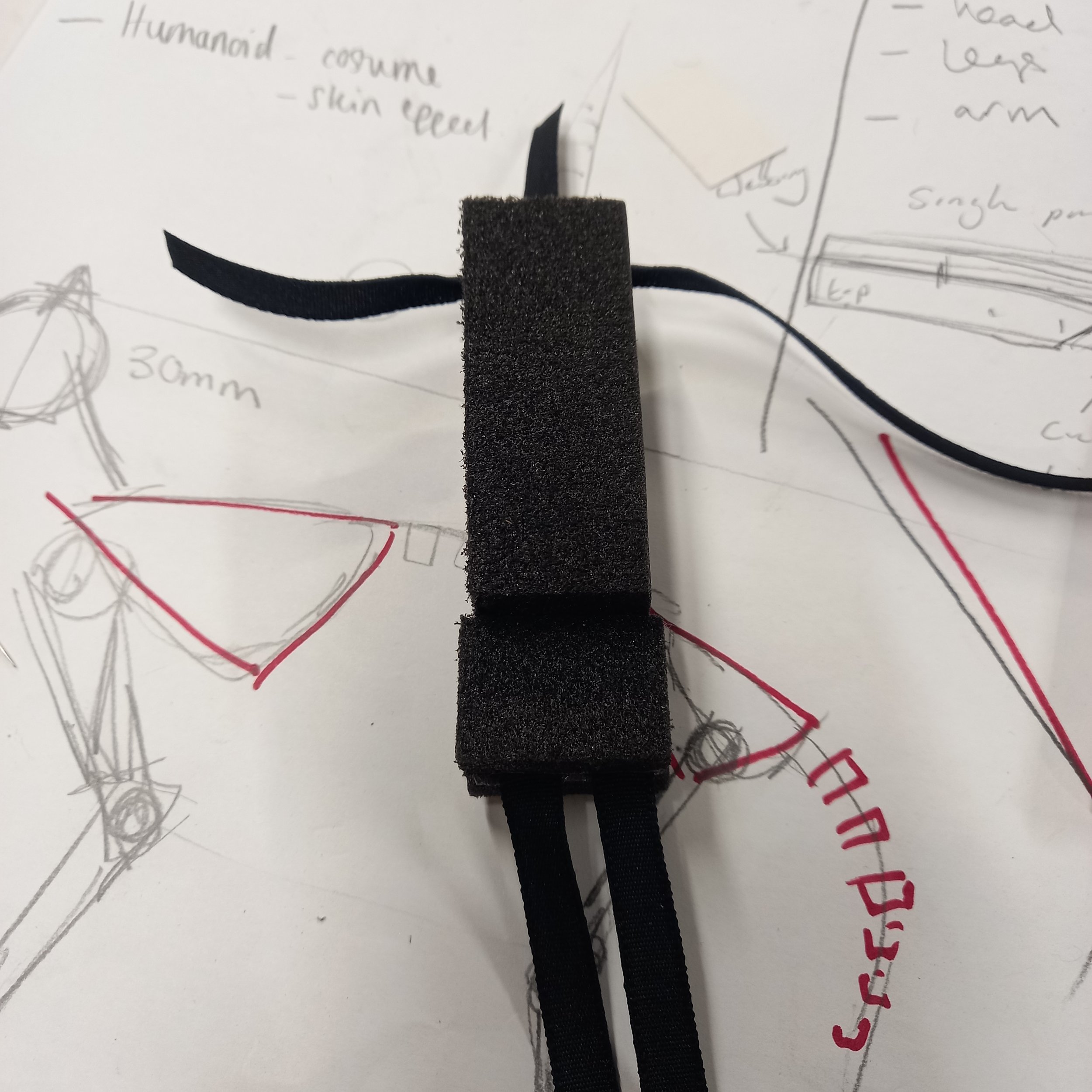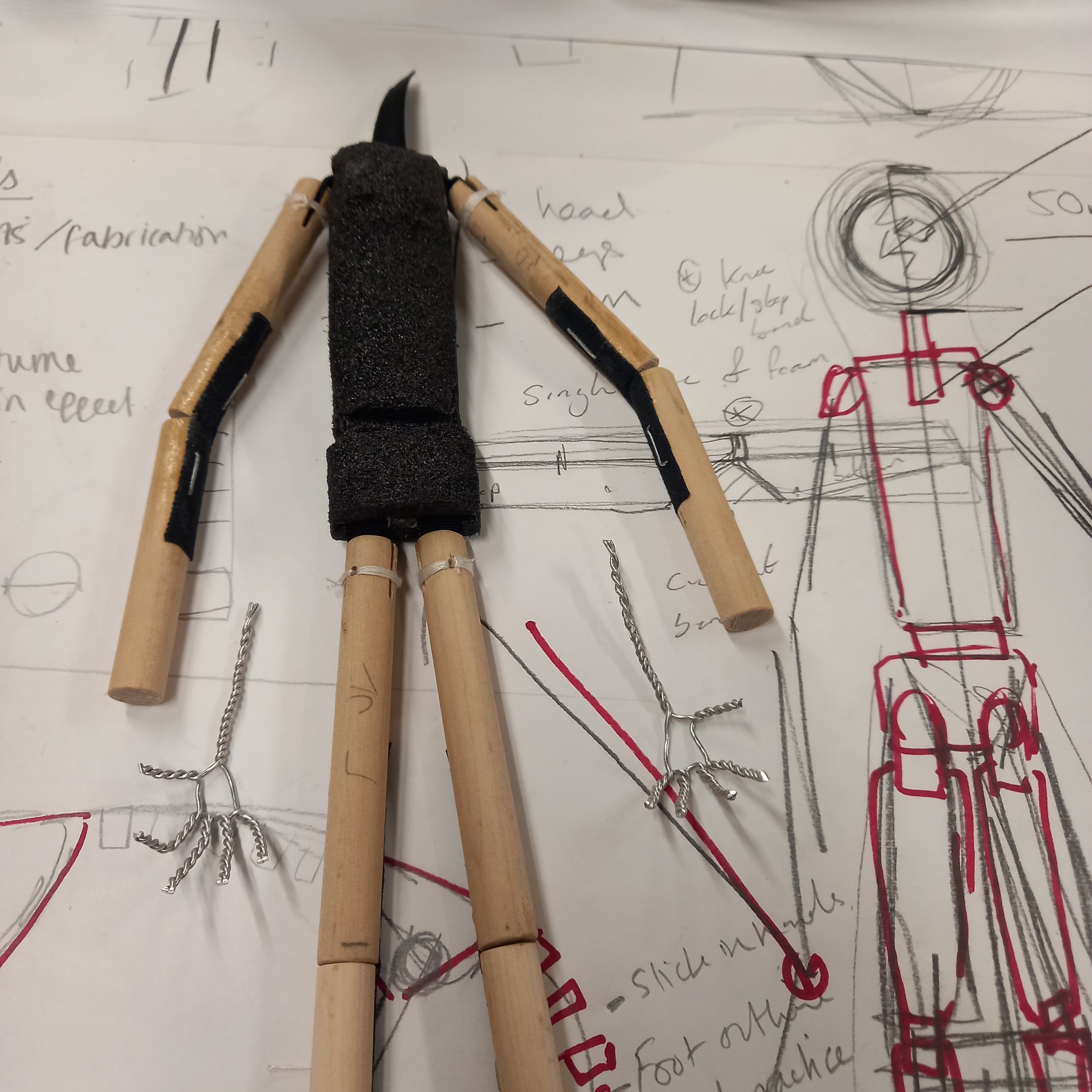Fabrication: First Steps
After workshopping ideas for potential tabletop puppetry pieces with my mentors Cat Rock (House of Funny Noises) and Elizabeth Johnson (Elizabeth Johnson Makes), we devised a short story that would require a range of different puppets and mechanisms to be fabricated - with the idea of enabling me to explore a wide range of techniques and approaches.
The story followed a humanoid character and their animal companion, searching an alien desert for water and, on finding moisture drips condensing in some long abandoned ruins, planting a seed in the sand where they fell.
Although straightforward, the piece would require at least three puppets: a humanoid, an animal, and a plant, plus a range of mechanisms to help bring them to life - a swishing tail, moving ears, and a growing seedling are all possibilities.
To lean into the puppetry more, the humanoid character would have exaggerated long limbs, enabling them to move in interesting ways, while the animal companion would be robotic in nature, enabling them to scan with their ears for water, as well as swish their tail to communicate.
With the help and guidance of Lizzie, we then set about planning and experimenting with different approaches. Drawing out all of the puppets was our first step, working out their comparative sizes, body shapes, joints and articulation, and - because we planned to use rods for the puppeteering - where the points of attachment would be.
For our humanoid puppet, for example, we settled on a tried-and-tested webbing and block body. This required sandwiching a strip of webbing between four carved foam blocks, the fronts and backs of the puppet’s torso and hips respectively, allowing them to bend at the waist.
From the body, further strips of webbing meant that we could attach the wooden dowel that we would use for the puppet’s long limbs. These strips of webbing were glued into slots cut into the dowel and also sewn in place, through holes that had been pre-drilled through the wood, while leaving just enough space at the shoulders and hips for the legs to move relatively freely.
The elbows and knee joints were created in a similar fashion, with webbing glued and then stapled to the dowel, but done so that the dowel acted as its on stopping point, preventing the limbs bending back on themselves.
This gave us a solid body, which would now need a head, feet, and hands, as well as points of attachment for the rods, and suitable clothing to dress them, which we will explore in the second part of this article, Fabrication: Humanoid Puppet.
In contrast, we went down very different routes with the animal companion puppet, Fabrication: Cat Puppet.




